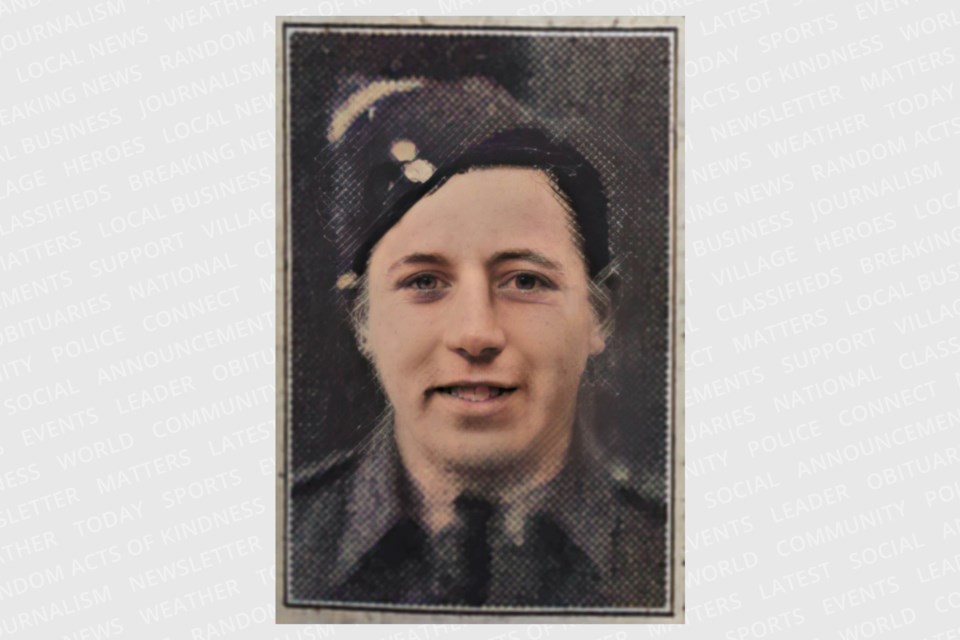A Guelph family has been given the news they've been waiting for for nearly 80 years.
They now know the burial location of their relative killed in the second World War, thanks in part to work being done by a veterans association in the Netherlands.
Flashback to the night of April 30, 1943. A Lancaster 8771 bomber plane crash landed in a field in Harderwijk, Netherlands, a city less than an hour's drive east of Amsterdam, killing four of the seven brave men inside.
"A friend of mine said 'I know a story about a Jewish family that were hiding in the woods from the Germans in a wooden caravan,'" Ruud Slangen, the chairman of the veteran's association told GuelphToday by phone from the Netherlands.
"Exactly that night, Friday the 30th of April, 1943, they wrote in their diary they heard a big bang. It rained debris on their caravan."
One of those who died was 20-year-old air gunner RAF Sgt. John Alston Proctor.
Those four bodies were later recovered and buried in that city's cemetery, but their families hundreds and thousands of miles away were not aware of it.
"I was in front of a tombstone, and I wondered 'who are you, where do you come from, what's your age, were you married and what was your profession.' I just wanted to know," Slangen said.
"Then, COVID came along, and I had the opportunity - because we were not allowed to go outside - to do some studying. I just started looking for names, and for pictures and whatever, and got in contact with several people."
It took a couple years, but Slangen said progress has been made on finding the relatives of the vast majority of the 45 servicemen.
One of those relatives, Ivor Harry Proctor, moved from the UK to Guelph with his wife Ellinor in 1956.
Kim Breese is their daughter, and still lives in Guelph to this day. She got contacted while on a trip to Arizona.
She told GuelphToday she was in disbelief that people were still working hard to find relatives, and found it reassuring that people recovered the bodies and looked after the grave sites all these years.
"I'm so thankful they let us know, and that they care enough to go to these lengths to find the relatives," Breese said. "It gives us some peace to know that he is buried, and he is being looked after."
However, there is a sense of sadness that her father couldn't be alive to see this day.
Harry passed away in 1999. Her mother Ellinor passed away last Thursday.
"My dad, his brother, never knew any details about what happened to him, except that he was shot down," Breese said. "I never knew where he was. He could've been at the bottom of the ocean, for all I knew, and dad knew nothing."
As to the man himself, Breese said he wasn't talked about much.
"I think dad had a hard time with the fact that he was killed in the war, and John was so young, he didn't have any family," she said. "Unfortunately, dad didn't share much with us."
But she does plan to learn more. Breese is already making plans to fly over to the Netherlands to visit the site, meet with Ruud and the others doing the work to link these fallen war heroes with their loved ones, wherever they are.
As for the legacy of the late air gunner – who would have turned 100 in September – it lives on by name. John Breese, Kim's brother, was named after his uncle John.
For Slangen, doing the work is all for the families, but it does provide a sense of satisfaction when a connection is made, and questions are answered.
"It's the same as if the Dutch team would be world champions," he said.
"I just want to find relatives to let them know that the names of their loved ones are never forgotten. That's the reason why I made a foundation, to be sure after we're all dead and gone, that this still continues, that commemoration."
As a veteran of the Royal Netherlands Army, Slangen adds when you walk the cemetery during commemorations, with the piper, the banner and photos on tombstones, it gives you goosebumps.
"It really gives you a lump in the throat. I know what these young men did for us, to liberate us, and that is something," he said.
"You can't say any words, it's just overwhelming."
